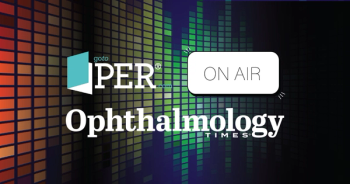
Ocular Therapeutix announces topline results for phase 2 clinical trial of OTX-DED for short-term treatment of dry eye disease
Study shows statistically significant improvement for primary endpoint of bulbar conjunctival hyperemia for OTX-DED 0.2 mg and 0.3 mg formulations compared with vehicle hydrogel insert.
Ocular Therapeutix Inc. today announced positive topline results from its Phase 2 clinical trial of OTX-DED (dexamethasone intracanalicular ophthalmic insert) for the short-term treatment of dry eye disease.
The Phase 2 clinical trial is a U.S.-based, randomly assigned, double-masked, vehicle-controlled, multi-center trial evaluating two different formulations of OTX-DED (dexamethasone intracanalicular ophthalmic insert) aimed to enroll approximately 150 subjects with dry eye disease.
According to the company, this trial was designed to assess the safety and efficacy of two formulations of OTX-DED for the short-term treatment of signs and symptoms of dry eye disease by evaluating the primary endpoint of bulbar conjunctival hyperemia and secondary endpoints of eye dryness symptoms using the visual analog scale (VAS), among other methodologies, in each case in comparison with a vehicle hydrogel insert.
The clinical trial was not powered for statistical significance.
The clinical trial enrolled 166 subjects in the modified intent-to-treat (ITT) population which included subjects who were randomized and had the OTX-DED insert placed in the study eye. The clinical trial achieved its pre-specified primary endpoint, demonstrating a statistically significant change of bulbar conjunctival hyperemia from baseline to day 15 compared to vehicle hydrogel using a central reading photographic assessment in the modified ITT population.
Change from baseline using the CCLRU Grading scale (0-4) was -0.51 for the OTX-DED 0.2 mg group (n=55), -0.43 for the OTX-DED 0.3 mg group (n=56), and -0.21 for the vehicle hydrogel insert group (n=55). These differences were statistically significant compared with the vehicle hydrogel for both the OTX-DED 0.2 mg group (p=.004) and the OTX-DED 0.3 mg group (p=.028). Sensitivity analysis using different methods of imputation including last observation carry forward (LOCF), Markov Chain Monte Carlo (MCMC), and fully conditional specification (FCS) were consistent with the primary analysis. Improvements from baseline were noted in the VAS dry eye symptoms for both OTX-DED 0.2 mg and OTX-DED 0.3 mg groups, but there was little separation between OTX-DED and the vehicle hydrogel insert. Other secondary endpoints are being evaluated.
OTX-DED inserts (both formulations) were observed to have a favorable safety profile and were generally well tolerated. There were two non-ocular serious adverse events, both in the vehicle hydrogel insert group, which were evaluated to be not related. There were no ocular serious adverse events. The most common ocular adverse events for subjects treated with OTX-DED were epiphora (lacrimation increase) (8.1%) and elevated intraocular pressure (IOP) (3.6%). All other ocular adverse events occurred in less than 1% of subjects. The most common non-ocular adverse event for subjects treated with OTX-DED was arthralgia (joint pain) which was seen in 1.8% of subjects. All other non-ocular adverse events occurred in less than 1% of subjects.
Michael Goldstein, MD, MBA, president, ophthalmology and chief medical officer of Ocular Therapeutix, pointed out that the company was pleased with the results of the Phase 2 clinical trial.
“Results of the trial showed statistically significant improvement in bulbar conjunctival hyperemia in patients with dry eye disease for OTX-DED compared with the vehicle hydrogel control for both OTX-DED formulations,” he said in a statement. “In my clinical experience, many dry eye patients experience episodic flares of their signs and symptoms related primarily to inflammation.”
Goldstein noted that topical steroids are commonly used for the short-term treatment of dry eye but all steroid eye drops contain preservatives that can lead to ocular surface toxicities such as irritation, burning, and stinging and, when used more chronically, other adverse events such as elevated IOP or cataracts.
“OTX-DED is a new, investigational, physician-administered, preservative-free intracanalicular insert designed to deliver dexamethasone and offering the potential to provide a differentiated treatment,” he added.
Antony Mattessich, president and CEO of Ocular Therapeutix, pointed out that the company hopes to expand its presence beyond the surgical setting and into ophthalmology and optometric offices, which it believes represent an enormous new opportunity to provide customers with its buy-and-bill products.
“The recent approval of Dextenza for the treatment of ocular itching associated with allergic conjunctivitis is our first beachhead to achieving this and the potential to offer a second product like OTX-DED, represents another large, office-based product opportunity,” he concluded. “We look forward to advancing this program in 2022.”
Newsletter
Don’t miss out—get Ophthalmology Times updates on the latest clinical advancements and expert interviews, straight to your inbox.












































